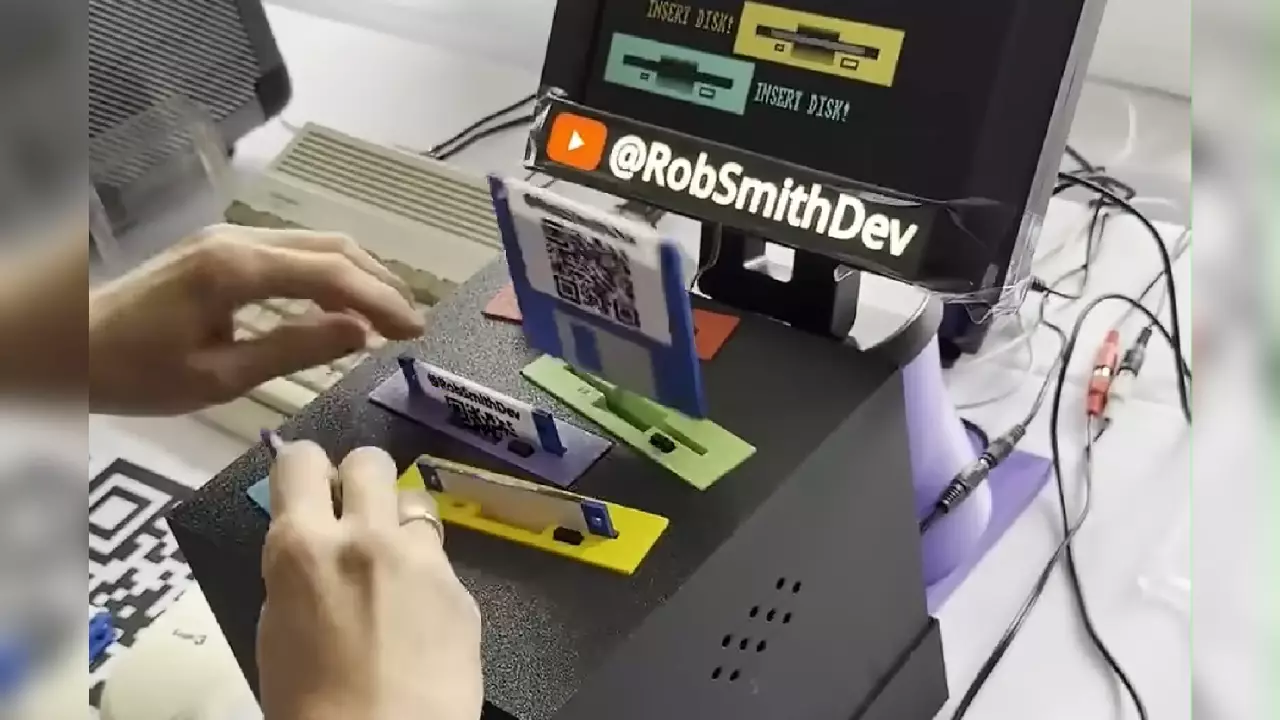In a world obsessed with cutting-edge technology, it’s easy to overlook the charm of the old. Yet, there’s an undeniable allure to vintage devices that transcends mere nostalgia, inspiring a new wave of creativity among tech enthusiasts. The recent creation of “DiskFight,” a game that combines the venerable floppy disk with modern engineering, exemplifies this phenomenon. It’s a testament to how inventors can breathe new life into archaic technology, turning it into engaging entertainment that sparks both memories and curiosity.
The creator, Rob Smith Dev, exemplifies a remarkable fusion of artistry and technical prowess. By ingeniously integrating simple mechanical components like linear actuators with classic software programming, he crafts an experience that’s both playful and intellectually stimulating. His approach demonstrates that innovation often lies not in reinventing the wheel but in reimagining how we interact with its old forms. The effort to build a device that physically manipulates floppy disks—an iconic symbol of retro computing—illustrates a powerful message: the past remains relevant when approached with fresh perspective.
This project casts a spotlight on how we can bridge generations of technology. Instead of simply viewing floppy disks as relics, Smith’s creation elevates them to the role of active game pieces. The tactile process of inserting and removing disks, combined with the mechanical challenge of aligning them with the game’s demands, introduces a playful physicality absent from most digital entertainment today. It shows that nostalgia, when directed through inventive hands, can foster creativity that is both meaningful and experimental.
Turning Floppy Disks into a Creative Canvas
At its core, DiskFight is more than just a game; it’s an artistic expression of retro-futurism. Smith’s choice to 3D print the game’s housing emphasizes the contemporary DIY spirit—melding old-school tech with modern fabrication. This fusion underscores an important lesson: nostalgia fuels innovation, particularly when it’s paired with accessible tools like 3D printing and microcontrollers. The process of designing, building, and fine-tuning the device reflects a DIY ethos that celebrates resourcefulness and hands-on experimentation.
The software component, developed with AMOS—an iconic programming language for Amiga computers—further bridges the past and present. The choice of using vintage software tools highlights a respect for the era’s technological aesthetic while demonstrating that such environments still hold creative potential. The soundtrack, crafted by Hoffman using retro devices, completes this retro revival. His music, resonating with the game’s intensity, immerses players in a sonic landscape that complements the visual chaos, ultimately enriching the gaming experience.
What stands out about DiskFight is its emphasis on physical engagement. Unlike digital-only games that rely solely on button presses, this setup invites players to manipulate disks with their hands, making tactile interaction an integral part of gameplay. The idea of hoisting disks in and out of slots—as part of a mini whack-a-mole routine—is both charming and inventive. It challenges traditional notions of gaming, suggesting that the future of retro-inspired entertainment lies in redefining how we experience familiar tech.
The Broader Significance of Retro-Inspired Innovation
Projects like DiskFight serve as proof that embracing retro aesthetics can invigorate the gaming community. They challenge the misconception that vintage tech is only of historical interest, instead positioning it as a wellspring for creative experimentation. For the modern gamer or tech hobbyist, such endeavors provide a tactile, sensory-rich alternative to sleek digital interfaces, reminding us that the joy of creation often resides in imperfect, hands-on projects.
Furthermore, DiskFight exemplifies a positive attitude towards technological preservation and reinterpretation. While decades ago floppy disks served as data repositories, now they’re transformed into interactive components of a playful game. It’s a celebration of how constraints—such as old hardware—can inspire ingenuity rather than stifle it. This mindset encourages a broader community to see old devices not as obsolete, but as opportunities for artistic expression and learning.
In a sense, this project embodies a philosophical shift: rather than mourn the passing of old technology, we can reinvent it, giving vintage equipment new legs to stand on. The emphasis on creativity over uniformity, on hands-on experimentation over passive consumption, sets a powerful example for future generations of makers. It suggests that nostalgia, when harnessed with imagination, can serve as the fertile ground for innovation—breathing new life into relics that once defined an era.

